November 21st, 2016
Get a Digital Backstage Pass with Periscope
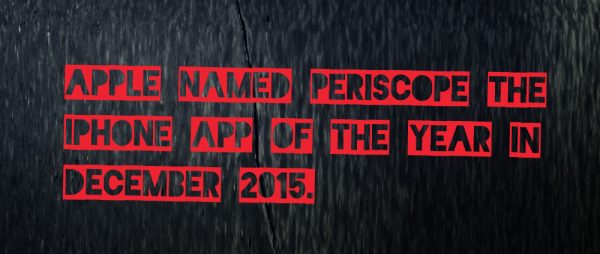 It can be tempting to show your followers only perfectly packaged and presented content. We’re here to advise you to ditch that strategy when using Periscope.
It can be tempting to show your followers only perfectly packaged and presented content. We’re here to advise you to ditch that strategy when using Periscope.
Built with an “as it’s happening” template, the content posted on Periscope is perceived as personal and raw. Your company will be wise to channel this mentality as well. Think of Periscope as a backstage pass to your brand; your viewers get all of the polished production, but they also get to see behind the scenes. This will strengthen their trust in your brand and offer a more intimate look at your company.
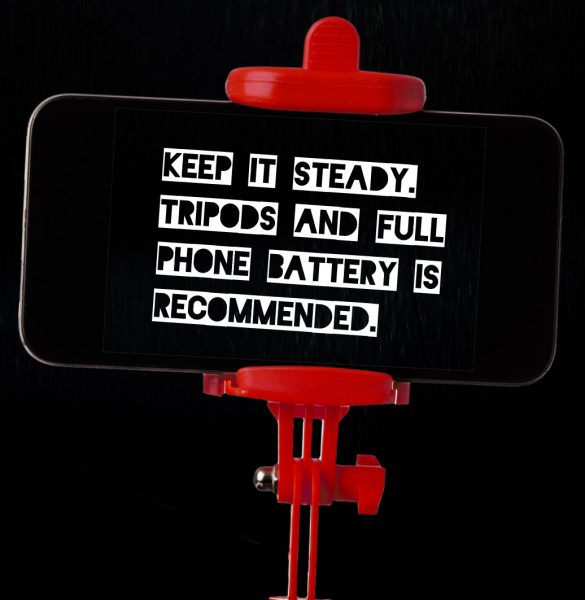
Continue optimizing this immersive, live video experience by interacting with viewers in real time. Crowdsource by encouraging viewers to comment or send hearts during the live stream, letting you know that they’re interested and enjoying your video. Or try a live Q&A with clients and customers. Rather than disappearing after 24 hours, Periscope’s recent update now automatically saves live streams and keeps the content alive, allowing your company to continue promoting the content you produced.
In the past year, live video has played a prominent role in capturing real-time, personal and pivotal moments in history. Capturing these live events created large movements for racial justice, social justice and more. The app continues to evolve with its users and suggests considerable longevity in the future.
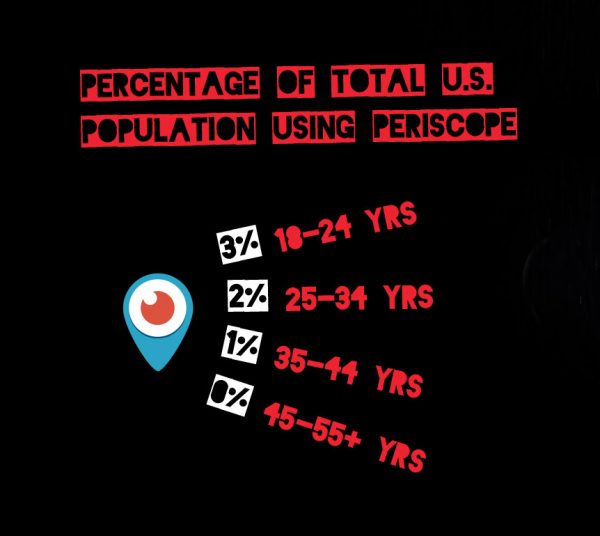
November 17th, 2016
Free Ad Day Case Study
We did it, thanks to you!
On Tuesday, November 15, Bozell shut down the office for one day and opened its doors to anyone and everyone in the community who needed help creating an ad. Or a flyer. Or a business card. Or a tattoo design. Or a logo. Or a … you get the point. Nothing was off limits. We set out to create 95 ads to celebrate our 95th anniversary, and we surpassed our goal by assisting 111 people! It was such a pleasure getting to help so many, and now we want to share with you the final products. Take a look at what our team created in such a short amount of time. (Nine hours to be exact!!) And thank you to everyone for helping us reach our goal.
We tweeted throughout the day. Check it out, and feel free to share any of your favorites below. #BozellFreeAdDay
May 4th, 2016
Deep in the Trenches
In case you hadn’t noticed, there’s a war on advertising. Ad blockers, satellite radio, DVR skipping, ad fraud, and general outrage across the land. Everybody loves to hate advertising.
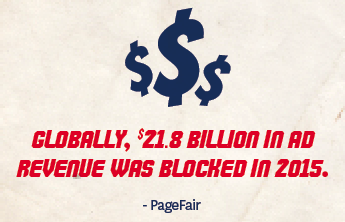 It’s gotten so bad, ad agencies are embarrassed to say they do it. They’re now “brand storytellers,” “experience engineers,” or even a “fan factory.” Seems like consumers happily accept “free” content while actively trying to thwart it.
It’s gotten so bad, ad agencies are embarrassed to say they do it. They’re now “brand storytellers,” “experience engineers,” or even a “fan factory.” Seems like consumers happily accept “free” content while actively trying to thwart it.
Some of this disdain for our livelihood is, unfortunately, well deserved. Advertising has traditionally been built on a model of repetition and interruption. And boy, has our industry gotten good at repeatedly interrupting. Throw in a little fraud, a dollop of misleading claims, and you’ve got a hot mess.
So what’s an ad agency to do?
Take up the good fight in the war on advertising, that’s what. Advertising is a noble business – the grease that lubricates our economy. As an old boss of mine used to 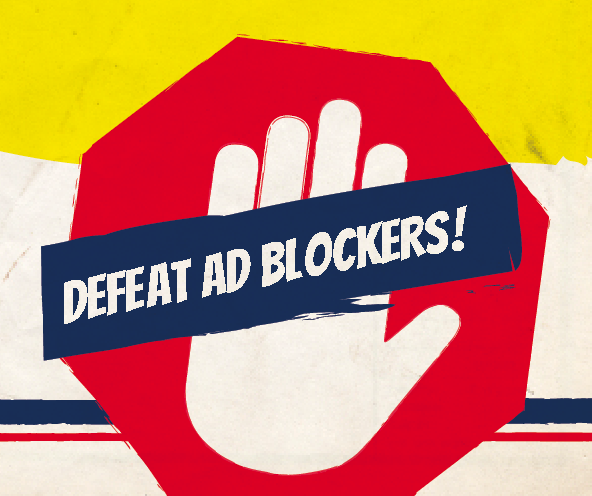 say, “nothing happens until somebody buys something.” Let’s not forget that most of Silicon Valley’s accumulation of wealth is built on advertising.
say, “nothing happens until somebody buys something.” Let’s not forget that most of Silicon Valley’s accumulation of wealth is built on advertising.
To fuel the fight, this issue of Thinking is dedicated to the war on advertising, giving us some insight into what we can do to win the righteous cause.
May 4th, 2016
Advertising: A Love-Hate Relationship
The myth perpetrated is that people HATE advertising. Fueling it lately is the heavy media coverage on the rise in popularity of ad blockers. But contrary to popular belief, people don’t categorically hate advertising. (If they did – enough to make it ineffective – then no one would advertise.)
Some even enjoy ads. Think about all the people you know who watch the Super Bowl or the Oscars just for the advertising. And what about those previews shown before movies, and those signs outside of gas stations announcing fuel prices? Those are ads, but rarely seen as such. That’s because people find them informative, helpful and engaging.
People don’t hate advertising. They hate being annoyed. They hate being rudely interrupted when they are trying to do something else. And they hate irrelevance. On the flip side, people love being entertained; they love being informed and feeling “in the know.” They also love great stories and interesting characters. And sometimes those are advertisements. Flo the Progressive Girl has more than five million Facebook fans, and Dos Equis’ The Most Interesting Man in the World is a popular meme.
Consumers understand that advertising subsidizes the content they enjoy, so they will tolerate and even engage with advertising if it is designed for the context in which it is being viewed, as well as the sensibilities of those viewing it.
But make no mistake, there are things people hate about the way some advertising is implemented. Top of the list is that no one likes to feel manipulated or unduly influenced. There’s evidence to suggest that we respond negatively to naked attempts at persuasion. We don’t like to feel like our personal information is being misused or abused. We don’t like big, bulky ads that interrupt and slow down our online experience. In that vein, the industry has come a long way. But we have a long way to go to get to ad nirvana.
Today, as in the past, the best advertising is ingenious at leaving impressions. Even then, it is not the ad that matters. It’s the ideas, impressions and positive feelings about the brand that matter.


14-18 years of age
Population: 23 million
- Engage most with high-energy/action, aspirational themes and celebrity endorsements, as these resonate more
strongly with them. - Loath intrusive, repetitive and stale ads.
- Don’t like unskippable pre-roll, especially on mobile.
- 28% of this demo uses ad blockers.

19-32 years of age
Population: 71 million
- Consume media differently than their older counterparts, exercising greater control over when and where they watch, listen and read content – and on which device.
- Show the highest levels of trust in advertising formats/channels, including TV, newspapers and magazines, and they’re also the most willing to take action.
- Because they came of age with the Internet, they have the highest levels of trust in online and mobile formats.
- Love good, original content and stories.
- Don’t like pop-ups ads, especially unskippable mobile app video pop-ups.
- Most receptive to sponsored content.
- 37% of this demo uses ad blockers (the highest percentage of all generations).

33-49 years of age
Population: 81 million
- Among the most influential generation, but it’s also somewhat forgotten (aka: America’s “middle child”).
- Avid consumers of content online. Three-quarters do so when on social media, and almost one in three consume content posted by brands or companies.
- Many feel like their generation is often forgotten about by advertisers.
- More likely than Millennials or Boomers to purchase a product from a brand whose advertising is specifically targeted at their generation.
- Respond well to messages around kid/tech dilemmas and bonding moments, as well as nostalgia with a deeper purpose and chin-up inspiration.
- Not fans of unskippable pre-roll.
- 24% of this demo uses ad blockers.

50-68 years of age
Population: 65 million
- Not big fans of online banner ads, but they are the most likely demo to click on an online ad by accident.
- Least likely generation to feel that advertisers have overlooked them.
- Facebook is their main platform for video consumption.
- Least receptive to sponsored content.
- Pet-centered ads have greater appeal for older consumers.
- Dislike mobile ads.
- 22% of this demo uses ad blockers.
May 4th, 2016
Content is More than King
How to better connect with your audience.
No matter their age, no matter where they go to do it, before consumers purchase or engage, they do their research to better understand a product or brand.
People don’t simply believe what a brand says. They hunt for information. They gather, consider and develop relationships. Most of us have heard the Bill Gates quote, “content is king,” but it isn’t just content anymore. It is quality content in the right place at the right time.

Communication has shifted fundamentally. Brands used to control the message. Now there are full-on conversations and community development. Because of this, consumer expectations have changed, too. They expect more than just disruptive sales messages. They expect value beyond the product or service.
you need to generate content that is useful and relevant.
How do you make sure you’re providing the best content possible?
The first step is understanding that there are three popular areas of content consumed by all audiences:
- Utility. Provides tangible value for a consumer’s life. This can be calculators, calendars, weather, FAQs, etc.
- Entertainment. Provides a brain break, a good laugh, a good cry or an emotional connection. This could be a video, a song, a meme or an image.
- Educational. Provides details, explanations and real-time, relevant alerts. This could be news, statistics, scores, tips, or how-to videos.
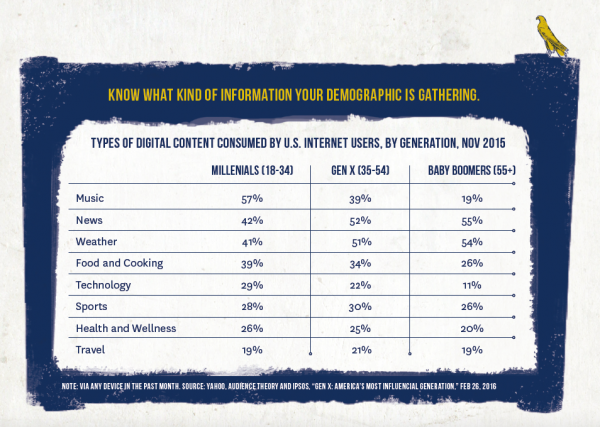
You need to generate content that is useful and relevant.
 Content provides marketers with unique ways to connect and prove we value more than just sales. The content we create can (and should) show that we value our customers.
Content provides marketers with unique ways to connect and prove we value more than just sales. The content we create can (and should) show that we value our customers.
When approaching any and all communications with a consumer, everything is a channel now. Rather than just mass media, it’s people and reviews and videos and images and memes. Keep in mind a user’s purpose and provide content in various forms to allow him or her to connect and appreciate the role you play in providing them with what they care about most.
Ask yourself 10 questions when creating content:
- What is the consumer’s purpose for seeking out the content?
- What will this content DO for them, not you?
- How will they experience it?
- What will bring them to it?
- When is it relevant?
- Why should they share it?
- Who are the people who would value it the most?
- Is it as concise and authentic as it could be?
- Where does it live and why?
- Would you choose to spend time reading, watching or engaging with it?
Consumers expect more, just as you expect more from them. If you want them to engage, communicate, recommend and advocate for you, provide them with content that is not only worthy of their time but demonstrates you are willing to put in the effort to create a relationship, not just a sale.
May 4th, 2016
The Ad Blockade
How to infiltrate and outsmart the ad blockers of the world.
If you’ve ever searched the Web for a specific item, only to be intercepted by an ad that threatens to move you to another page before you’ve even started to read, you can understand the growing adoption of ad blocking.
But what exactly is ad blocking?
Ad blocking removes different kinds of advertising from a Web user’s online experience. These programs target ads such as pop-ups, banner ads and other common forms of online advertisement, allowing a user to surf the Web without annoying distractions or interruptions. Great for surfers. Not so great for advertisers.
How big of a deal is it?
Ad blocking is having a significant impact on ad revenue. PageFair and Adobe’s 2015 Ad Blocking study tells us that globally $21.8 billion in ad revenue was blocked in 2015, representing 14 percent of the global ad spend. The projected number for 2016 is $41.4 billion. We also know from the study that 16 percent of the U.S. online population blocked ads during the second quarter alone in 2015. That’s a lot of lost eyeballs!
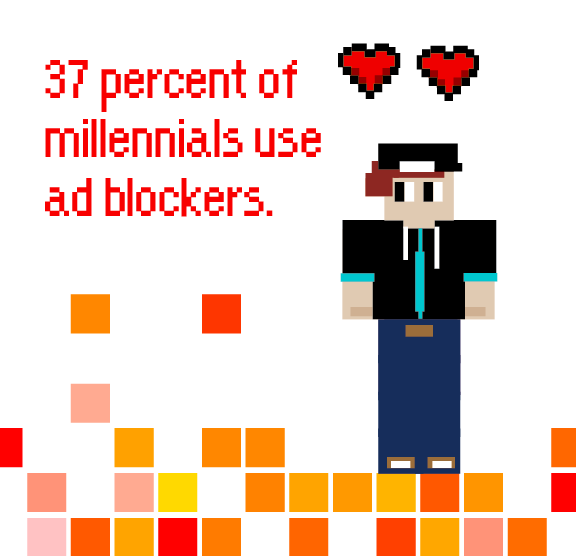 To really put the volume into perspective, a staggering combined total (between Chrome, Firefox and Safari) of 198 million average monthly active users are availing themselves of ad blocking. And, as per usual with the Web, youth is leading the way with 37 percent of millennials already using ad blockers.
To really put the volume into perspective, a staggering combined total (between Chrome, Firefox and Safari) of 198 million average monthly active users are availing themselves of ad blocking. And, as per usual with the Web, youth is leading the way with 37 percent of millennials already using ad blockers.
All of this combined proves that there is a definite hurdle facing digital marketing, and it will only continue to become more challenging. It almost leads to the question:
Will digital advertising cease to exist?
Not likely. Though ad blocking may make surfing the Web less annoying, it has prompted publishers to open dialogues on what they’re calling the “value exchange” – which, simply put, means content has value and that value has to be bought or earned (for example, the idea of enjoying free content in return for viewing ads).
Unfortunately, infrastructure and Web content, which we’ve come to rely on so heavily, don’t just create themselves. That takes time. And time, as we know, is money. Consumers don’t want to pay for their Web content, nor do publishers. So who’s going to pay for the content? Marketers are happy to, but they want value in return. And when ad blockers take away that return, it becomes a problem.
So now the big question is, what can marketers do to combat the challenge of ad blocking?
The first thing to remember is that, while a lot of people are using ad blockers, a lot of people aren’t. Those are the people we, as marketers, need to focus on.
It’s imperative we refine and target our audience as much as possible. And the good news is that the digital arena is the perfect place to do that. Between SEO and social platforms, we have the ability to focus in on our ideal audience – based on demographic, geographic and even psychographic triggers. By narrowing in on this preferred audience, even if some have ad blockers, at least the people who do receive our message will be the people we want to reach. You’ll be spending your money as wisely as possible.
To take that one step further, because ad blocking has made honing in on your target audience so important, another great strategy is remarketing (aka: retargeting). Remarketing is basically positioning ads in front of people who have recently visited your site. They see these ads on other sites as they surf the Web. These campaigns tend to be much more successful because the audience has already shown interest in your company. Again, more bang for you buck.
So, the moral of the story is, there’s really not much you can do to stop ad blocking, but you can be smarter with your dollars. As diligent and dedicated marketers, it is our responsibility to stay informed and monitor our campaigns closely. We must be knowledgeable about alternate means of building effective digital marketing campaigns, and we must be ready to turn on a dime when ad blocking threatens to turn our targeted, niche buys into the wasteful mass market campaigns of days gone by.
May 4th, 2016
Basic Training
How Creative Can Win the War on Advertising
So, surprise. People (your customers) hate ads, and actively seek to avoid them.
And this is supposed to be news?
True, the drumbeats have been getting louder, and the tools to avoid ads are smarter every day.
So how can those of us who create advertising (or as some now call it, “content”) reach an audience that doesn’t want to be reached, and is telling us so in no uncertain terms?
Rather than look for the latest technological sleight of hand to fool consumers (branded content, clickbait, surveys, interruptive stunts, product placement, etc.), let’s look back at the basics – and take a lesson from Howard Gossage who sagely said “People don’t read ads. They read what interests them, and sometimes that’s an ad.” It’s our job as advertising creative to interest them.
- Start with the audience. There’s a very simple way to do this, although it can be counter-intuitive to many clients. Start at the end. Rather than begin with what you as a marketer want to say and what you have to sell, start with what your audience wants or needs to know. Remember, demographics can be deceiving. “College educated females age 55+” includes both Hillary Clinton and Caitlyn Jenner. Only when you really know who you are talking to can you craft a message that is relevant. And relevancy is currency.
- Understand the context. Where and how will the audience engage with your message? If you try to push the same lame catchphrase and graphic across every medium, you’re going to announce loudly and clearly “I’m an ad! Avoid me!” Campaign continuity comes from having a consistent tone and message, not the same trademarked tagline and color combination. If the ad is designed to appear on mobile devices, it’s going to be very different than an ad on a Web page. If it’s on the side of a bus, speak to the driver of the car passing by (or stuck behind it). Context is everything.
- Have an insight. Don’t leave it up to the client, the account team or your agency strategist (if you’re lucky enough to have a good one) to spoon feed you everything. There’s a chance they could be misguided or just plain wrong. Everybody has their own agendas – yours should be to make work that resonates with the audience. So study them. Know their behaviors, desires, actions. Watch for purchase triggers and body language. Are they bold and decisive? Hesitant? Do they look pleased when they buy? Or resigned? Don’t just do internet research; go watch your customer in action. You will learn more in 30 minutes of observation than you will in three days of Google searches.
So what’s the key to winning the war on advertising? Mad Men’s Don Draper said it well: “If you don’t like what’s being said, change the conversation.” Stop making ads people hate and start making communications they want to hear.

March 2nd, 2016
“That good ol’ boob tube.”
Once upon a time that phrase conjured up a universal image of that box in your living room where you watched your favorite shows on a specific day at a specific time. We spent hours in front of that box. We shared our excitement over the latest Tuesday night episode of that great show the next day with all of our friends.
TV watching has been a big part of our daily lives for decades. And despite all the press about cord cutters, the drop in TV viewership and the rise of time spent with digital media, TV watching is still a huge part of our daily lives. It comprises 35 percent of all the time we spend with media.
The difference?
Our watching is no longer relegated to just that box in the living room. Nor are we constrained by time. We can watch whatever we want, whenever we want. We can (and do) even binge watch that series we missed — for days on end if we choose.
Today’s TV is time and screen agnostic.
That’s great news for us as watchers. We have more choices. We can watch anywhere. Anytime. And it’s only going to get better.
But as advertisers, things are getting real. Really complicated. Really exciting. Really fast.
Fragmentation is crazy high. But advances in TV planning and buying methods are getting better and smarter everyday. Where once we could only target through programming that appealed to a specific demo, today with things like connected TV, addressable TV and programmatic media buying, we are getting ever closer to the kind of super smart targeting we’ve now become accustomed to in digital media buying.
The future is exciting. And based on everything that is happening right now. The future is here.
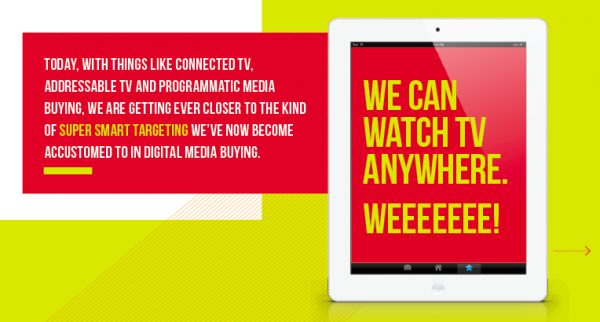
March 2nd, 2016
TVs, They Are A Changin’
Watching TV used to be so simple. First there were just a handful of networks. Then broadcast TV gave way to cable. But even as the number of channels multiplied exponentially, it was all still easy to understand. And buying it as advertisers was fairly straightforward. You called your network or cable rep for a national buy, or your local station rep for a local buy. Yes, it took smart planning and skills, but it was a straightforward proposition.
That was then. This is now.
Here are three things you should know about how it’s all changing.
1. While today, the television set is still the dominant mode for watching TV content, new viewing patterns are growing rapidly, fed by three factors. First is the growing usage of connected TVs. Second is the increasing availability of original content from nontraditional sources, such as Netflix or Amazon. Third is the binge-watching phenomenon – the clearest expression of audience desire to control how and when they watch content. And to make it even more complex, for the majority of us, watching TV is no longer a standalone experience. 78 percent of us use another device while simultaneously watching TV. (Right now, I’m watching HGTV while writing this on my laptop and checking email on my phone.) And it’s evolving to a more unified TV-digital platform, 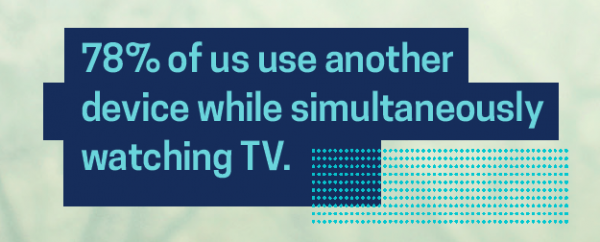 as evidenced by the fact that several small-pay TV providers (cable companies) have already announced that they will carry Netflix as a station. Eventually, it will become simpler for viewers and advertisers.
as evidenced by the fact that several small-pay TV providers (cable companies) have already announced that they will carry Netflix as a station. Eventually, it will become simpler for viewers and advertisers.
2. What’s happening in the TV ecosystem right now is an interesting twist. Think about this – traditional advertising has always been the driver. It has driven digital. For all the so-called innovation in the industry, all “new” ad units are merely re-appropriated old media. Native ads are simply advertorials, Instagram ads are merely print ads with shorter headlines, and TV ads have formed the backbone for every pre-roll video. But now, for the first time ever, we will soon see digital techniques shaping TV advertising. The upside of that is the heightened ability to target specific and/or narrow segments.
3. A lot of the words we currently use to describe media and devices are no longer appropriate. Over the next decade, we expect the vocabulary that has been commonplace in advertising will begin to change. In fact, it’s already starting. So familiarize yourself with these ecosystems terms to the right. Learn them. Use them.
TV Terms
Linear TV – Television service where the viewer has to watch a scheduled TV program at a particular time and on a particular channel.
OTT (Over The Top) – The delivery of video/programming over the Internet without a multiple-system operator (think cable company) in control of or distributing the content.
Smart TV – Internet is built into the TV itself. It includes a Web browser and keyboard, so you can browse the net.
Connected TV – A device connected to the TV that allows it to stream content over the Internet. Think Roku, Chromecast, Apple TV. (Note: 49 percent of U.S. homes have at least one connected TV set.)
Addressable TV – Enables advertisers to selectively segment TV audiences and serve different ads or ad pods (groups of ads) within a common program or navigation screen. Segmentation can occur at geographic, demographic, behavioral and, in some cases, self-selected individual household levels, through cable, satellite and Internet Protocol television (IPTV) delivery systems and set-top boxes (STBs). (Note: Currently available in about 50 million households.)
Linear to On Demand – TV links are made available for the viewer to activate via their remote control device. They can access on-demand content, often in the form of advertisements or merchandise for sale.
SVOD (Subscription Video On Demand) – Streaming service that allows subscribers to watch as much content as they want in exchange for a recurring fee, typically monthly and/or annually. Think Hulu, Netflix, Amazon Prime.
AVOD (Advertising Video On Demand) – Consumers can watch free-to-access content in exchange for viewing ads. Think YouTube.
TV Everywhere — Customers can access content from a network through Internet-based services (either live or on demand) as an aspect of their subscription to the service.
March 2nd, 2016
Follow the Measurement Road
We’ve got quite a ways to go to catch up with TV’s evolution.
Technology has dramatically altered the landscape of media for all time. We thought it was a big deal when network TV became broadcast vs. cable. That was nothing compared to the viewer fragmentation resulting from connected TV or streaming video on demand. We’re not in Kansas anymore, Dorothy.
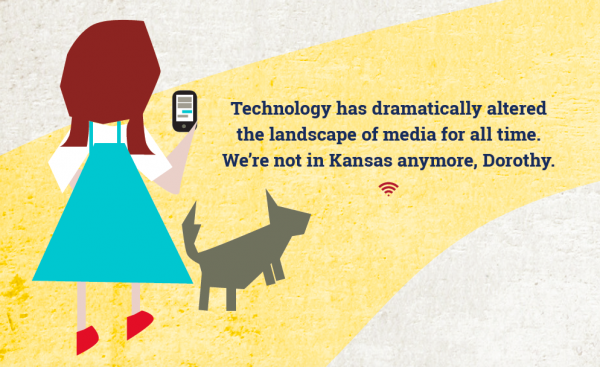
Why is the evolution of TV viewing a good thing for marketers? Because it enables us to keep up with the viewers’ diversified lifestyles, target more narrowly and efficiently, and ultimately improve our ROI. Marketers are thrilled by the prospect of being able to closely track these metrics.
But how long will their exuberance last if the ability to measure viewership is, at best, suspect and, at worst, missing altogether? Take care not to make the mistake of being overly trusting when it comes to measurement claims.
We have seen fairly sophisticated marketers (hungry for measurement in this era of accountability) put far too much stock in unsubstantiated data when it would have been just as productive to throw all the data down the steps and see what lands closest!
The first step in a reasonable approach to measurement is to take a close look at the existing landscape.
For years, TV has relied on Nielsen data (and years before that it was both Nielsen and Arbitron data) to measure its viewing audience. Today, Nielsen is still the pre-eminent source of TV measurement, with upstarts moving in, attempting to snag the title. Nielsen openly admits that they can’t measure connected TV and streaming video on demand. As they state on their measurement Cheat Sheet, “Nielsen can measure a very small amount of content (mostly Hulu) that’s delivered via so-called over-the-top web-connected devices that include a Nielsen code.” It goes on to state that “in most cases” it can’t measure OTT devices like Roku or Apple TV and is just beginning to test measurement of video streaming services like Amazon Prime
and Netflix.
This would be no problem if other data services were competently filling the gap, but here’s where it gets tricky. Media measurement is not something that can be created out of nothing overnight. It can take months, even years, to gather enough data for truly meaningful measurement as we’ve come to know it.
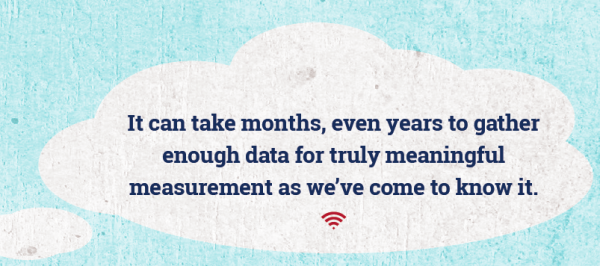
But fear not; help may be closer than you think. In 2009, leading television content providers, some media agencies and a group of leading TV advertisers formed an organization to promote innovation in audience measurement for television and cross-media platforms. The organization is known as CIMM, or Coalition for Innovative Media Measurement.
CIMM explores and identifies new methodologies and approaches to audience measurement through proof-of-concept pilot studies with independent measurement companies.
Their initial focus is on two key questions:
- What are the opportunities and challenges of using return-path data from set-top boxes and smart TVs to measure viewing of television?
- What solutions can be developed to measure use of media across platforms?
In June of 2015, CIMM published a research document entitled: Enriching Media Data: Quality is Key Requisite for Maximizing ROI. The primary purpose of this document is to educate the buyer on quality guidelines and standards by which to evaluate richer sets of audience metrics created by integrating audience data and TV viewership from multiple sources with a focus on quality, recency and consistency.
CIMM has made some important strides in their quest.
But what about now? What can you do as a marketer until trustworthy data exists? First and foremost – don’t be fooled by fancy numbers disguised in high-tech graphics. What’s out there now has the proverbial “sound and fury signifying nothing.”
Take a close look at the methodology behind the data. Scrutinize quality and make them vet their process to your satisfaction. If it seems lacking, odds are, the data will be flawed. And if they can’t explain it, you should be seeing flashing red lights and hearing sirens. Understand that just because new technologies seem to crop up overnight that doesn’t mean accompanying measurement will appear as quickly.



